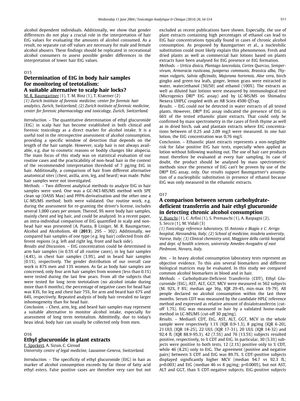Determination of EtG in Body Hair Samples for Monitoring Teetotalism: A Suitable Alternative to Scalp Hair?
June 2014
in “
Toxicologie analytique et clinique/Annales de toxicologie analytique
”

TLDR Body hair can be used to test for alcohol intake, especially in men.
The study evaluated the use of body hair samples (excluding pubic hair) for the quantitative determination of ethyl glucuronide (EtG), a marker for alcohol intake, as an alternative to scalp hair, which may not always be available. The study involved thousands of cases per annum, with 9% being body hair samples, primarily from chest and leg hair. Two analytical methods, GC-NCI-MS/MS and LC-MS/MS, were validated for EtG analysis. Results showed that EtG could be determined in 0.5% of arm hair, 4.4% of leg hair, 3.9% of chest hair, and 0.1% of beard hair samples. The gender distribution was 87% men and 13% women, with very few women's arm hair samples tested. For subjects tested for long-term teetotalism, the percentage of negative cases was 83% for head hair, 75% for leg and chest hair, and 67% and 64% for arm and beard hair, respectively. The study concluded that chest, arm, leg, and beard hair samples could be suitable alternatives for monitoring alcohol intake, particularly in men due to the current beauty standards that result in fewer women having sufficient body hair for testing.

